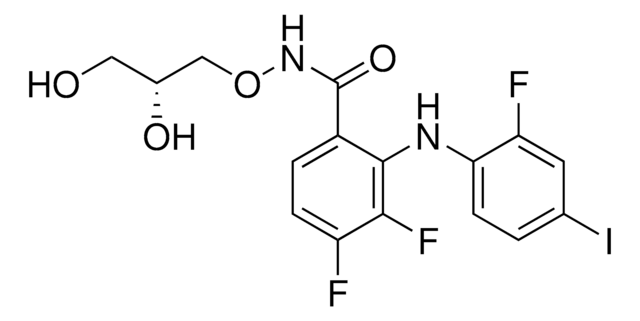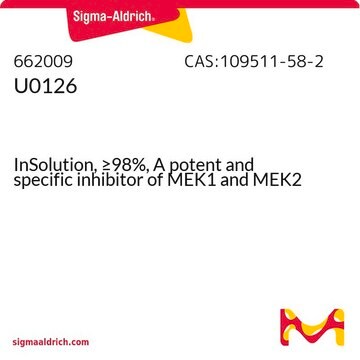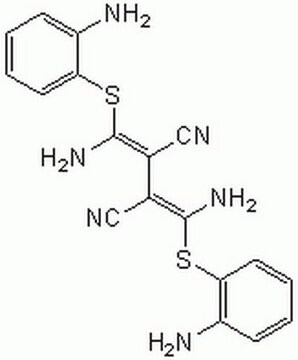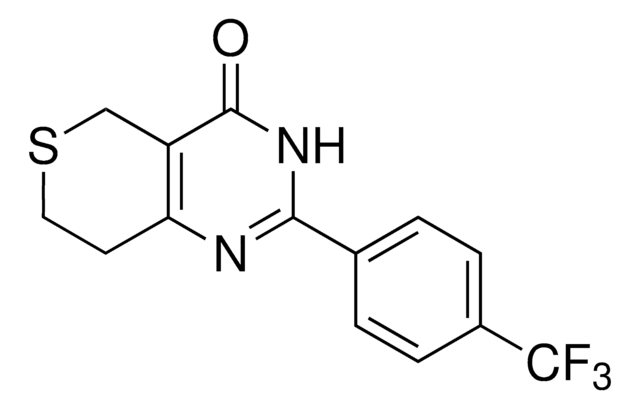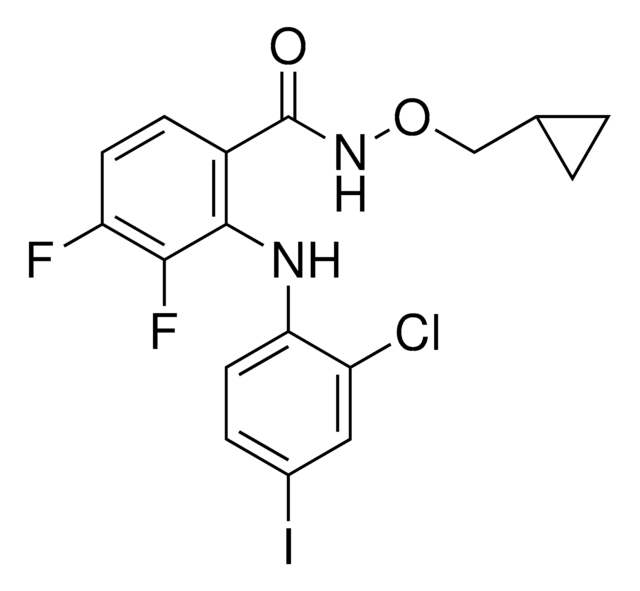444968
PD0325901
≥95% (HPLC), liquid, MEK1/2 inhibitor, Calbiochem®
Synonym(s):
InSolution MEK1/2 Inhibitor III, PD0325901, PD 0325901, N-((2R)-2,3-Dihyroxypropoxy)-3,4-difluoro-2-((2-fluoro-4-iodophenyl)amino)-benzamide, PD325901
About This Item
Recommended Products
Product Name
MEK1/2 Inhibitor III, PD0325901, InSolution, ≥95%
Quality Level
Assay
≥95% (HPLC)
form
liquid
manufacturer/tradename
Calbiochem®
storage condition
OK to freeze
desiccated (hygroscopic)
protect from light
shipped in
ambient
storage temp.
−20°C
SMILES string
Ic1cc(c(cc1)Nc2c(c(ccc2C(=O)NOC[C@H](O)CO)F)F)F
InChI
1S/C16H14F3IN2O4/c17-11-3-2-10(16(25)22-26-7-9(24)6-23)15(14(11)19)21-13-4-1-8(20)5-12(13)18/h1-5,9,21,23-24H,6-7H2,(H,22,25)/t9-/m1/s1
InChI key
SUDAHWBOROXANE-SECBINFHSA-N
Packaging
Warning
Physical form
Legal Information
Storage Class Code
10 - Combustible liquids
WGK
WGK 2
Flash Point(F)
188.6 °F - closed cup - (refers to pure substance)
Flash Point(C)
87 °C - closed cup - (refers to pure substance)
Certificates of Analysis (COA)
Search for Certificates of Analysis (COA) by entering the products Lot/Batch Number. Lot and Batch Numbers can be found on a product’s label following the words ‘Lot’ or ‘Batch’.
Already Own This Product?
Find documentation for the products that you have recently purchased in the Document Library.
Our team of scientists has experience in all areas of research including Life Science, Material Science, Chemical Synthesis, Chromatography, Analytical and many others.
Contact Technical Service